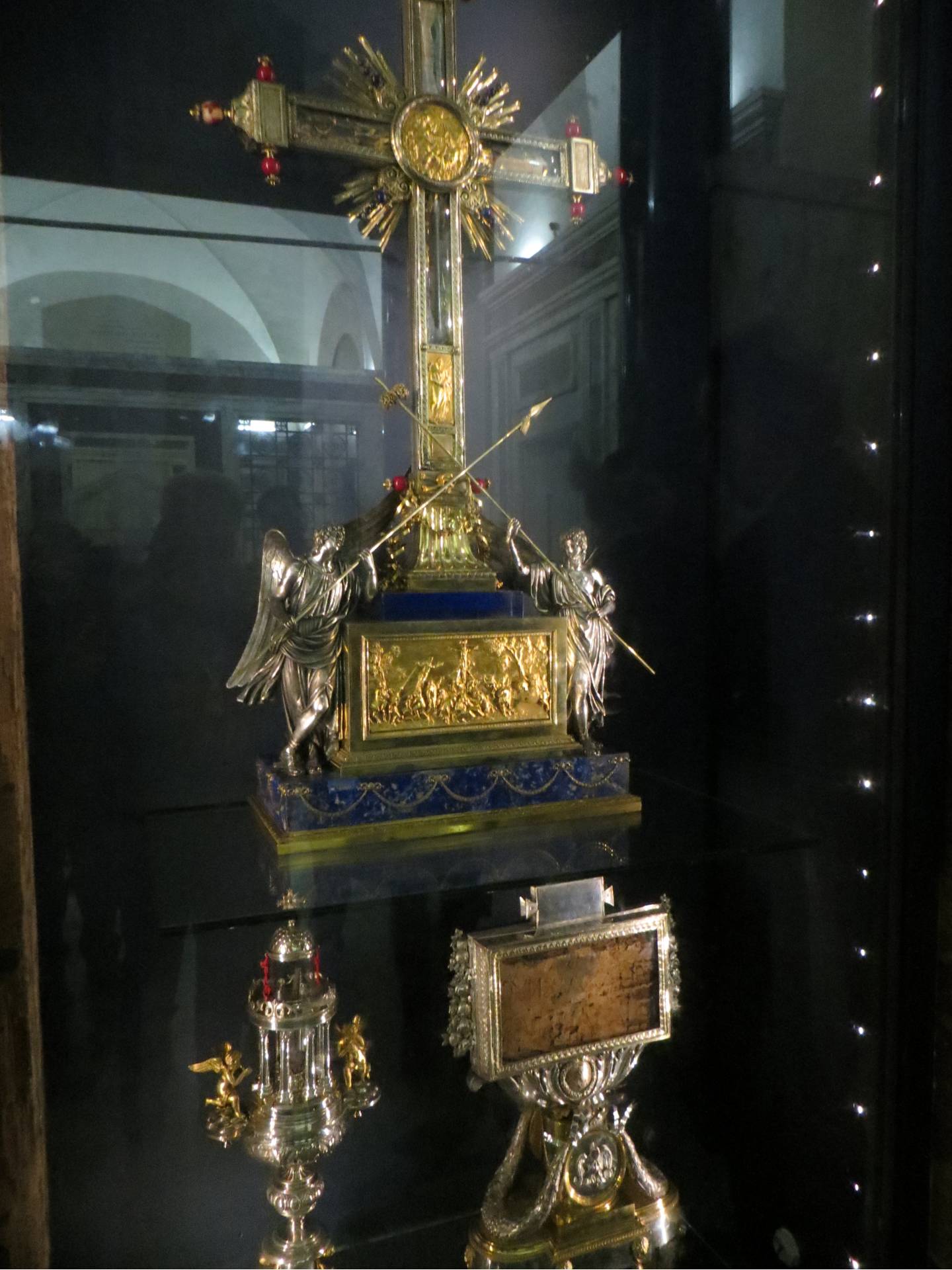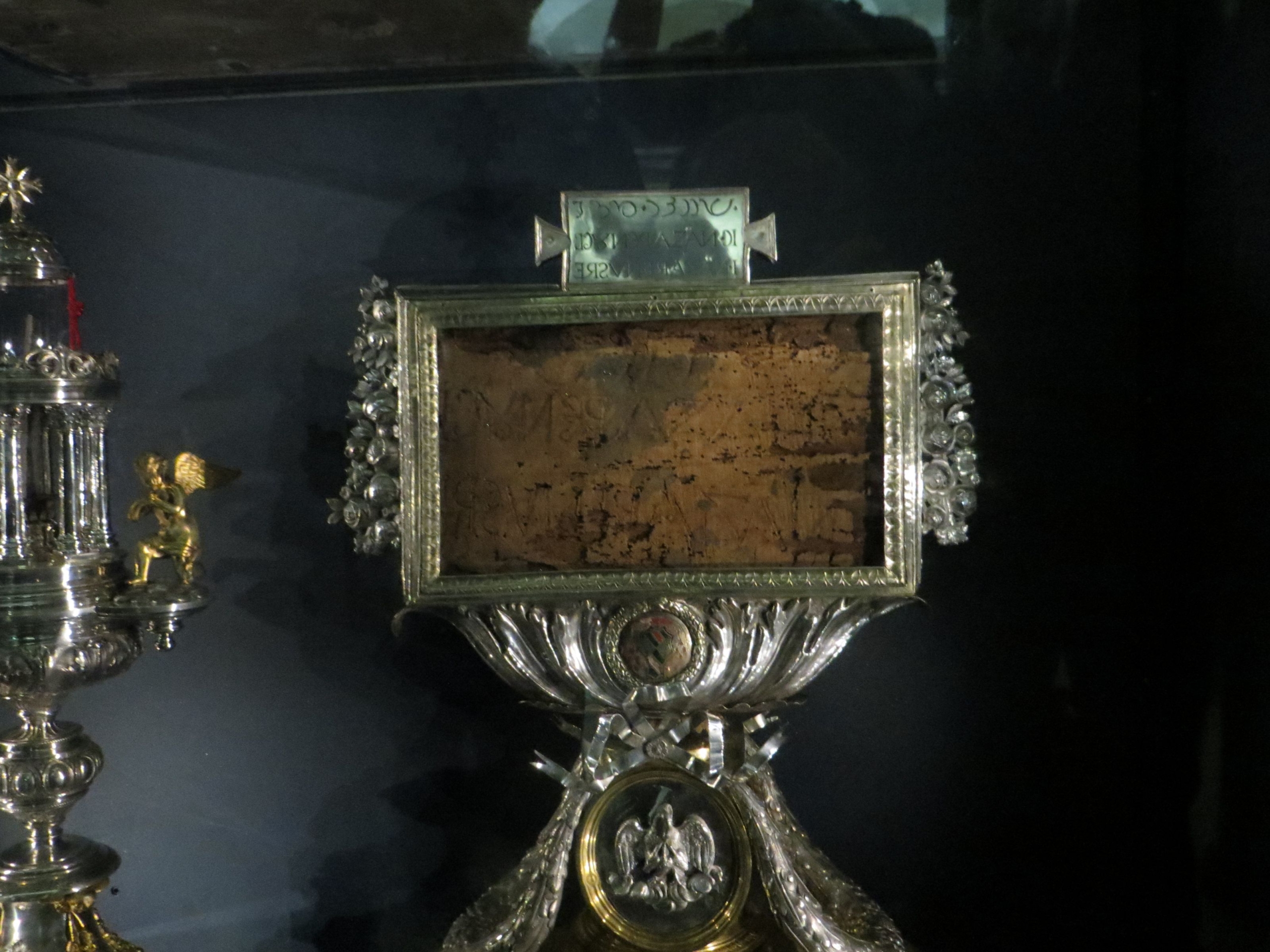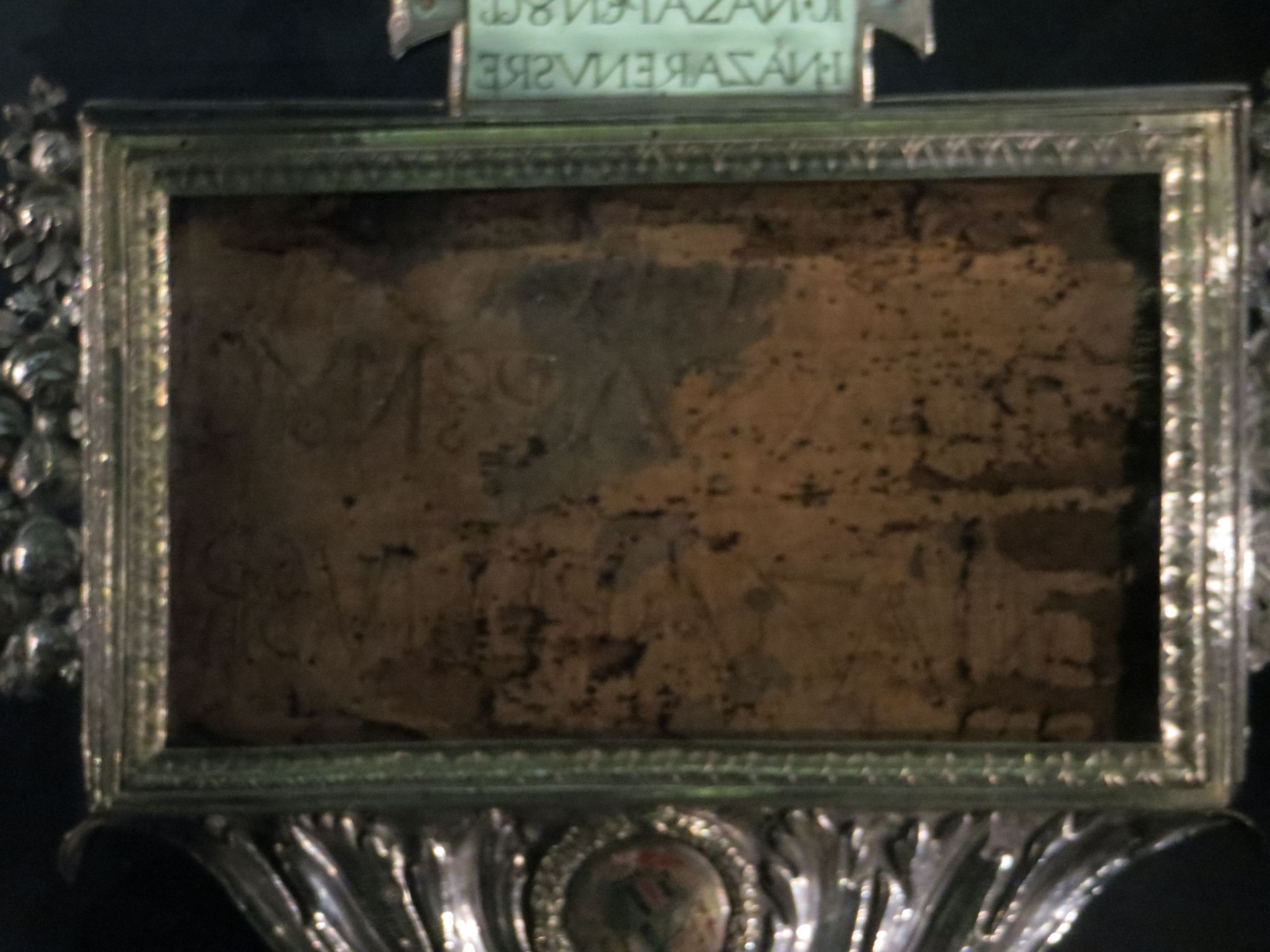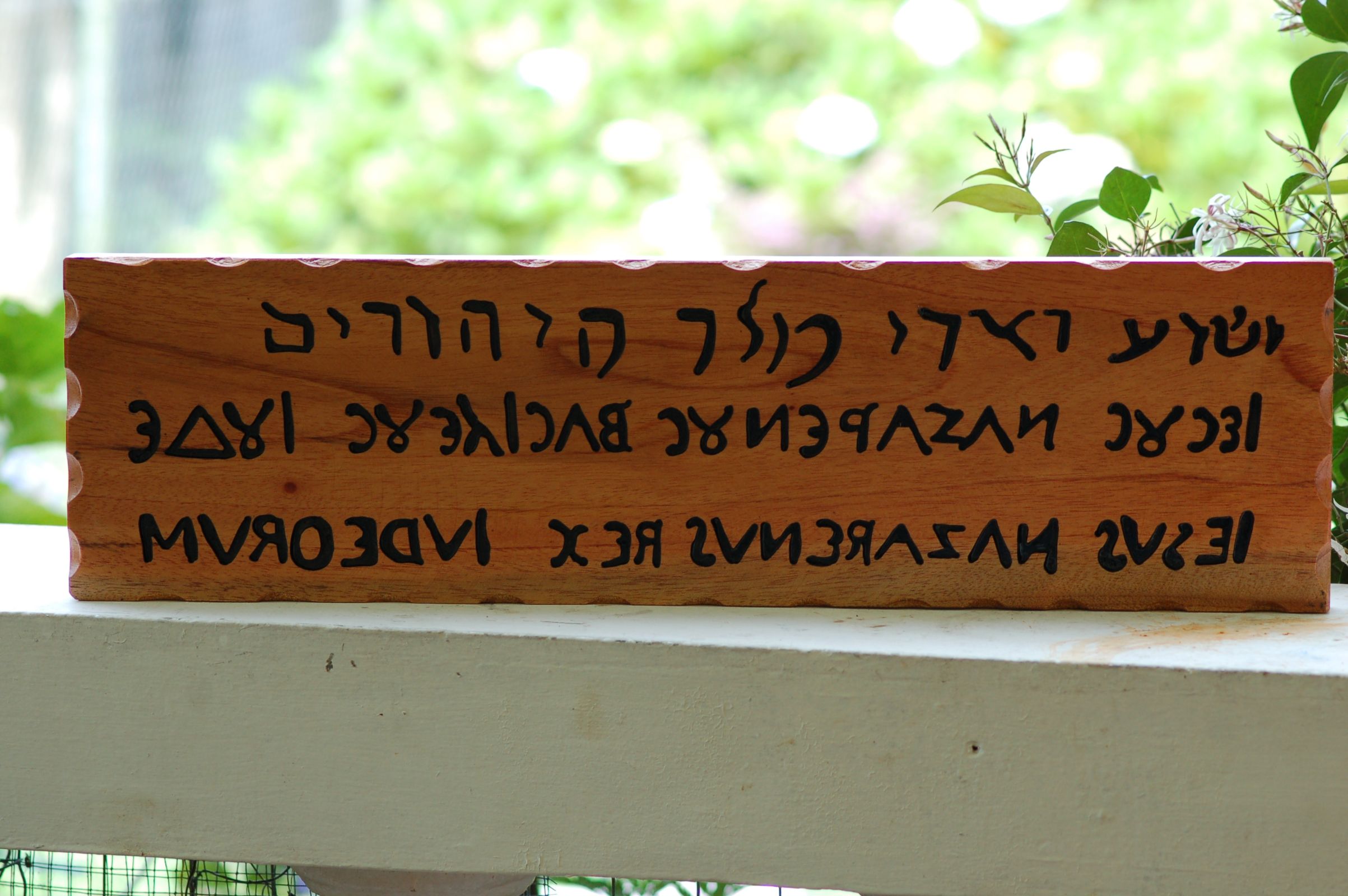THE TITULUS INRI
In the early fourth century A.D. Helena, the mother of the Emperor Constantine, visited Jerusalem after her baptism to Christianity.
Helena, so the story goes, made a pilgrimage to Jerusalem to search for the tomb of Jesus. When she found it, she found the title, part of the cross and several of the Instruments of the Crucifixion still there. She removed these items from the tomb and made various distributions of them. It is said that she divided the title into three sections, left one in Jerusalem, and took one to Constantinople and one to Rome. The section now in the Santa Croce de Jerusalema in Rome is not the original but is a copy (see photographs).
The letters are gouged out of the wood and painted red. The whereabouts of the original and the other two sections are not known, but a possible reconstruction of the entire title has been made. The plaque measures about thirteen and one-half by twenty-four inches (24 x 13.5 inches) or, sixty-one by thirty-four cm (61 x 34.29 cm).
I made a copy in wood, gouging out the letters (see photograph).
Now there is something special with the text on the titulus. In the King James version of the Bible, the book of the Gospel according to St. John, Chapter 19, verses 19 & 20 states:
Verse 19“ And Pilate wrote a title and put it on the cross. And the writing was JESUS OF NAZARETH THE KING OF THE JEWS.
VERSE 20: This title was read by many of the Jews: for the place where Jesus was crucified was nigh to the city: and it was written in Hebrew, and Greek, and Latin”.
In Latin it said: Iesus Nazarenus Rex Iudaeorum and the first letters form : INRI
In the Jewish language it said: Yeshua HaNotsri V’Melech HaYehudim and the first letters form YHVH which is the Holy Name of God in Hebrew.
Psalm 119, King James version of the Bible, the longest book of the Bible, has a language key. The language key was inserted by the command of King James of England. The language key denotes subtitles indicating the mini chapters in this Psalm. The language key is the Hebrew alphabet, Aleph to Tau.
The English language knows the Lords name as YHWH, W can be changed with V. King James pronounced the name YahWeh, some called the name JeHoVaH.
Jesus name in Hebrew is Yeshua. The word Yeshua in Hebrew means: salvation, God saves, God helps.
Let us look again at the scripture of John 19:19. Pontius Pilatus wrote, Jesus of Nazareth King of the Jews in 3 languages, Greek, Hebrew, and Latin. Greek was the official language of business and commerce. Latin was the language of the ruling Romans. Hebrew was the language of the governed country. Look at the words closely as the fonts of the first letters in Latin have been enlarged, INRI, this is a shortened version in Latin. It has been used by Christians for two millennia.
The deeper meaning of YHWH is understood in the Hebrew language. The High Priest and religious leaders (Sanhedrin) of the Jewish People were extremely upset with Pontius Pilate and told him to change the words, but according to the Gospels Pontius Pilate said:
“What I have written, I have written “, (“Quod scripsi, scripsi”), and refused to change it.
Pontius Pilate wrote the Hebrew name in description. Hebrew is written and read from right to left. So, the first letters formed the word YHVH, YaHWeH, YHWH meaning ADONAI (=GOD). The Priests and the religious leaders had crucified GOD.
Yeshua (God saves, God helps), the Son of God died at the exact time (3 P.M.) as the Pascal Lamb was offered by the High Priest and thousands of priests in the Temple, for the Feast of Passover. The blood offering for the emission of sins was satisfied with the death of God’s Son. That was God’s plan for His creation. The Christ came to satisfy God’s law, not to do away with it.
The new covenant of the Lord had started. Now all He had to do was raise His son from the dead to complete the covenant written in the Gospels John 3:16. The victory over death would satisfy the law, with Jesus as the first fruit of this victory.
“The spotless Lamb, slain from the foundation of the world”.
Now it is interesting to go back to the chapter 6.4: (Three Letters on the Oval Solid Object).
We have proven there the presence of the oval solid object under the beard of the Man on the Shroud, with on the surface in relief, the three Hebrew letters that form the word TS’ON which means: “herd of small animals like sheep and goats”, but like I explained in this chapter it was used as “SACRIFICIAL LAMB” in the Thorah, in Exodus 12:21, when Moises sends the elders back to their tribes and homes with the instructions of God to sacrifice a lamb and put the blood on the doorpost.
From the first moment of Christianity, Jesus Christ was always known and mentioned as “The Lamb of God, that takes away the sins of this world”, so, “THE SACRIFICIAL LAMB”, like the three letters say on the solid oval object under the beard.
That, of course, is no coincidence.

Photo 1. Part of the Titulus in Iglesia della Croce Rome |

Photo 2. Part of the Titulus in Iglesia della Croce Rome |

Photo 3. Part of the Titulus in Iglesia della Croce Rome |

Photo 4. Copy made by Dr. Petrus Soons |
